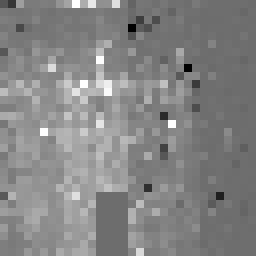
Principal:
Deputy:
Analyst:
AORKEYS:
Last Updated:
Raw data file: mips_AOR_7196416_sed_A70_Pukn_pos1_3s.fits = IC443
Raw data file: mips__7195648_sed_A70_Pukn_pos1_0s.fits = 30 Dor
Raw data file: mips__7196160_sed_A70_Pukn_pos1_0s.fits = NGC7009
Note: The observations of NGC6826 and NGC7009 failed because errors in the location of the slit in the focal plane led to slit being positioned off of these targets. IC443 and 30 Dor are large enough that the pointing error still led to portions of these nebulae being included in the SED slit.
Reduction:
mips_sloper -j CamK -l -q TARGET.raw.fits
mips_caler -C CamK -P mips_caler70S.param TARGET.red.fits
IDL> Iraf_Legacy,'TARGET.cal.fits',RepVal=-9999,/nomask
Within IRAF: imcombine was used to find medians of the various spacecraft/scan mirror positions used in each AOR. No sky subtraction was performed as the nebulae were large enough to be included in the "sky" chops 3 arcmin from the target positions.
For IC443, the median of 6 DCEs from one spaceraft/scan mirror position that showed the best evidence for the [O I] 63µm was constructed (shown below). The line could not be identified on the B side of the array. A median was then constructed from columns 2-12 of side A of the array. From this, the position of the [O I] 63µm was measured.

30 Dor was observed in all pointings and scan mirror chops employed in the AOR. The nebula was much brighter in the "on" mirror positions than in the "sky" positions. The AOR for this target employed a 4-position SED "map" and the brightest section of the nebula can be seen stepped along the length of the slit. A median of the DCEs for each position of the map was made and then the four frames were added together. The resulting image, shown below, allows for the 88µm [O III] emission line to be traced for the entire length of the slit and it can be identified even on side B of the 70µm array (columns 17-24).

| Columns medianed | Position along slit | Position of emission line |
| (X; in pixels) | (X; in pixels) | |
| 1-6 | 3.5 | 21.23 |
| 7-12 | 9.5 | 21.66 |
| 13-18 | 15.5 | 21.77 |
| 19-24 | 21.5 | 21.82 |
These data indicate that there is roughly a 0.75 pixel (1.28 µm) difference in the line position on the array between one end of the slit and the other. However, the formal uncertainties in the linear fit are consistent with no line shift along the slit in the spatial direction.
Conclusions
The MIPS SED mode meets the requirements of providing spectral coverage
from about 52 µm to 106 µm with a dispersion of about 1.7 µm/pixel. The alignment between the dispersive element (diffraction grating) and
the 70 µm array is very good as there is less than a 1-pixel difference
in the position of an emission line along the length of the SED slit.
Output and Deliverable Products

Actions Following Analysis